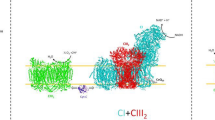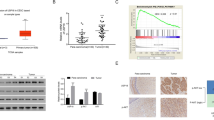Abstract
Sirtuins belong to the family of class III histone deacetylases; its role in neoplasia is controversial as both tumor-suppressive and promoting functions have been reported. There are very few reports available, where expressions of sirtuin isoforms are comprehensively analyzed during neoplasia. Therefore, in the present study, the expression of SIRT1, SIRT2, and SIRT7 during different stages of cervical cancer progression was analyzed. The normal cervical epithelium showed feeble expression of sirtuin isoforms, SIRT1, SIRT2, and SIRT7. A significant increase in SIRT1 expression was noted in the cytoplasm as well as in the nucleus of proliferative layers of cervical epithelium in squamous intraepithelial lesions (SIL); however, in the squamous cell carcinomas (SCC), a heterogeneous pattern of SIRT1 expression varying from low to high was noted. A progressive increase in the expression of both SIRT2 and SIRT7 was noted during cancer progression in the following order: normal < preneoplasia < cancer. Cervical cancer cell lines, HeLa and SiHa, showed higher levels of SIRT1 and SIRT2 in comparison to the immortalized cell counterpart, HaCaT. Specific inhibitors of SIRT1 (Ex527) and SIRT2 (AGK2) impaired the growth of the cervical cancer cells, SiHa, but not of the HaCaT cells. SIRT1 inhibition caused cell death, while SIRT2 inhibition resulted in cell cycle arrest. In conclusion, we report the overexpression of SIRT2 and SIRT7 proteins in cervical cancer and suggest probable application of sirtuin inhibitors as therapeutic targets. Further, a specific increase in the levels of SIRT1 in intraepithelial lesion makes it a promising candidate for identification of preneoplastic changes.



Similar content being viewed by others
Abbreviations
- SIRT:
-
Sirtuin
- IHC:
-
Immunohistochemistry
- SIL:
-
Squamous intraepithelial lesion
- SCC:
-
Squamous cell carcinoma
References
Haigis MC, Sinclair DA. Mammalian sirtuins: biological insights and disease relevance annual review of pathology: mechanisms of disease. Annu Rev Pathol Mech Dis. 2010;5:253–95.
Nogueiras R, Habegger KM, Chaudhary N, Finan B, Banks AS, Dietrich MO, et al. Sirtuin 1 and sirtuin 3: physiological modulators of metabolism. Physiol Rev. 2012;92:1479–14.
Polito L, Kehoe PG, Forloni G, Albani D. The molecular genetics of sirtuins: association with human longevity and age-related diseases. Int J Mol Epidemiol Genet. 2010;1:214–25.
Presegue LB, Vaquero A. Dual role of sirtuins in cancer. Gene Cancer. 2011;2:648–62.
Deng CX. SIRT1, is it a tumor promoter or tumor suppressor? Int J Biol Sci. 2009;5:147–52.
Vaziri H, Dessain SK, Ng Eaton E, Imai SI, Frye RA, Pandita TK, et al. hSIR2 (SIRT1) functions as an NAD-dependent p53 deacetylase. Cell. 2001;107:149–59.
Li S, Banck M, Mujtaba S, Zhou MM, Sugrue MM, Walsh MJ. p53-induced growth arrest is regulated by the mitochondrial SirT3 deacetylase. PLoS One. 2010;5:e10486.
Wang R, Sengupta K, Li C, Kim H, Cao L, Xiao C, et al. Impaired DNA damage response, genome instability, and tumorigenesis in SIRT1 mutant mice. Cancer Cell. 2008;14:312–23.
Kim HS, Patel K, Jacobs KM, Bisht KS, Aykin-Burns N, Pennington JD, et al. SIRT3 is a mitochondrial-localized tumor suppressor required for maintenance of mitochondrial integrity and metabolism during stress. Cancer Cell. 2010;17:41–52.
North BJ, Verdin E. Mitotic regulation of SIRT2 by cyclin-dependent kinase 1-dependent phosphorylation. J Biol Chem. 2007;282:19546–55.
Jeong SM, Xiao C, Finley LWS, Lahusen T, Souza AL, Pierce K, et al. SIRT4 has tumor-suppressive activity and regulates the cellular metabolic response to DNA damage by inhibiting mitochondrial glutamine metabolism. Cancer Cell. 2013;23:450–63.
Van Meter M, Mao Z, Gorbunova V, Seluanov A. Repairing split ends: SIRT6, mono-ADP ribosylation and DNA repair. Aging. 2011;3:829–35.
Barber MF, Michishita-Kioi E, Xi Y, Tasselli L, Kioi M, Mogtaderi Z, et al. SIRT7 link H3K18 deacetylation to maintenance of oncogenic transformation. Nature. 2012;487:114–8.
Cha EJ, Noh SJ, Kwon KS, Kim CY, Park BH, Park HS, et al. Expression of DBC1 and SIRT1 is associated with poor prognosis of gastric carcinoma. Ciln Cancer Res. 2009;15:4453–9.
Ahuja N, Li Q, Mohan AL, Baylin SB, Issa JP. Aging and DNA methylation in colorectal mucosa and cancer. Cancer Res. 1998;58:5489–94.
Huffman DM, Grizzle WE, Bamman MM, Kim JS, Eltoum IA, Elgavish A, et al. SIRT1 is significantly elevated in mouse and human prostate cancer. Cancer Res. 2007;67:6612–8.
Chen J, Zhang B, Wong N, Lo AWI, To KF, Chang AWH, et al. Sirtuin 1 is upregulated in a subset of hepatocellular carcinomas where it is essential for telomere maintenance and tumor cell growth. Cancer Res. 2011;71:4138–49.
Kim JK, Noh JH, Jung KH, Eun JW, Bae HJ, Kim MG, et al. Sirtuin7 oncogenic potential in human hepatocellular carcinoma and its regulation by the tumor suppressors MiR-125a-5p and MiR-125b. Hepatology. 2013;57:1055–67.
Kim HS, Vassilopoulous A, Wang RH, Lahusen T, Xiao T, Xu X, et al. SIRT2 maintain genomic integrity and suppresses tumorigenesis through regulating APC/C activity. Cancer Cell. 2011;20:487–99.
McGlynn LM, Zino S, MacDonald AI, Curle J, Reilly JE, Mohammed ZM, et al. SIRT2: tumor suppressor or tumor promoter in operable breast cancer. Eur J Cancer. 2014;50:290–301.
Finley LW, Carracedo A, Lee J, Souza A, Egia A, Zhang J, et al. SIRT3 opposes reprogramming of cancer cell metabolism through HIF1α destabilization. Cancer Cell. 2011;19:416–28.
Alhazzazi TY, Kamarajan P, Joo N, Huang JY, Verdin E, D’Silva NJ, et al. Sirtuin-3(SIRT3), a novel potential therapeutic target for oral cancer. Cancer. 2011;117:1670–8.
Marquardt JU, Fischer K, Teufel A, Krupp M, Thorgeirsson SS, Galle PR, et al. Loss of SIRT6 in hepatocellular carcinoma: associated molecular traits and clinical implications. Z Gastroenterol. 2012;50:5–34.
Benavente CA, Schnell SA, Jacobson EL. Effects of niacin restriction on sirtuin and PARP responses to photodamage in human skin. PLoS One. 2012;7:e42276.
Lai CC, Lin PM, Lin SF, Hsu CH, Lin HC, Hu ML, et al. Altered expression of SIRT gene family in head and neck squamous cell carcinoma. Tumor Biol. 2013;34:1847–54.
Allison SJ, Jiang M, Milner J. Oncogenic viral protein HPV E7 up-regulates the SIRT1 longevity protein in human cervical cancer cells. Aging. 2009;1:316–27.
Michishita E, Park JY, Burneskis JM, Barrett JC, Horikawa I. Evolutionarily conserved and nonconserved cellular localizations and functions of human SIRT proteins. Mol Biol Cell. 2005;16:4623–35.
Kiran S, Anwar T, Kiran M, Ramakrishna G. Sirtuin 7 in cell proliferation, stress and disease: rise of the seventh Sirtuin! Cell Signal. 2015;3:673–82.
Villalba JM, Alcaín FJ. Sirtuin activators and inhibitors. Biofactors. 2012;38:349–59.
Feng W, Xiao J, Zhang Z, Rosen DG, Brown RE, Liu J, et al. Senescence and apoptosis in carcinogenesis of cervical squamous carcinoma. Mod Pathol. 2007;20:961–6.
Lomnytska MI, Becker S, Bodin I, Olsson A, Hellman K, Hellstrȍm A-C, et al. Differential expression of ANXA6, HSP27, PRDX2, NCF2, and TPM4 during uterine cervix carcinogenesis: diagnostic and prognostic value. Br J Can. 2011;104:110–9.
Ram BM, Ramakrishna G. Endoplasmic reticulum vacuolation and unfolded protein response leading to paraptosis like cell death in cyclosporine A treated cancer cervix cells is mediated by cyclophilin B inhibition. Biochim Biophys Acta. 2014;1843(11):2497–512.
Kiran S, Chatterjee N, Singh S, Kaul SC, Wadhwa R, Ramakrishna G. Intracellular distribution of human SIRT7 and mapping of the nuclear/nucleolar localization signal. FEBS J. 2013;280:3451–66.
Livak KJ, Schmittgen TD. Analysis of relative gene expression data using real-time quantitative PCR and the 2(−Delta Delta C(T)) Method. Methods. 2001;25:402–8.
Maxwell MM, Tomkinson EM, Nobles J, Wizeman JW, Amore AM, Quinti L, et al. The Sirtuin 2 microtubule deacetylase is an abundant neuronal protein that accumulates in the aging CNS. Hum Mol Genet. 2011;15:3986–96.
Chhabra S, Bhavani M, Mahajan N, Bawaskar R. Cervical cancer in Indian rural women: trends over two decades. J Obstet Gynaecol. 2010;30:725–8.
Munoz N, Castellsague X, de Gonzalez AB, Gissmann L. Chapter 1: HPV in the etiology of human cancer. Vaccine. 2006;24(S3):1–10.
Ota H, Tokunaga E, Chang K, Hikasa M, Iijima K, Eto M, et al. Sirt1 inhibitor, Sirtinol, induces senescence-like growth arrest with attenuated Ras-MAPK signaling in human cancer cells. Oncogene. 2006;25:176–85.
Kabra N, Li Z, Chen L, Li B, Zhang X, Wang C, et al. SirT1 is an inhibitor of proliferation and tumor formation in colon cancer. J Biol Chem. 2009;284:18210–7.
Byles V, Chmilewski LK, Wang J, Zhu L, Forman LW, Faller DV, et al. Aberrant cytoplasm localization and protein stability of SIRT1 is regulated by PI3K/IGF-1R signalling in human cancer cells. Int J Biol Sci. 2010;6:599–612.
Kuo SJ, Lin HY, Chien SY, Chen DR. SIRT1 suppresses breast cancer growth cancer growth through downregulation of Bcl-2 protein. Oncol Rep. 2013;30:125–30.
Jang KY, Hwang SH, Kwon KS, Kang MJ, Lee DG, Kim HS, et al. SIRT1 expression is associated with poor prognosis of diffuse large B-cell lymphoma. Am J Surg Pathol. 2008;32:1523–31.
Hou H, Chen W, Zhao L, Zuo Q, Zhang G, Zhang X, et al. Cortactin is associated with tumor progression and poor prognosis in prostate cancer and SIRT2 other than HADC6 may work as facilitator in situ. J Clin Pathol. 2012;65:1088–96.
Chen J, Chan AW, To KF, Chen W, Zhang Z, Ren J, et al. SIRT2 overexpression in hepatocellular carcinoma mediates epithelial to mesenchymal transition by protein kinase B/glycogen synthase kinase-3β/β-catenin signaling. Hepatology. 2013;57:2287–98.
Acknowledgments
We thank Dr. Lucy M. Anderson for the valuable suggestions, critical reading, and editing. SS is supported by a fellowship from the Department of Biotechnology. Laboratory of GR is supported by the funding from the Department of Biotechnology, New Delhi, India. We thank Mr. Bala for the help in flow cytometry. We thank Dr Nirupama Chatterjee for the help with statistical analysis. The critical comments and suggestions from the anonymous reviewers have helped immensely to improve the manuscript.
Conflicts of interest
None
Author contribution
SS performed all the experiments with the help from ST and SK. PAR helped in immunohistochemistry; BS and SS helped in immunoblotting. VVR performed the statistical analysis. The pathological evaluations were by UK. GR designed the study and wrote the manuscript with inputs from SS.
Author information
Authors and Affiliations
Corresponding author
Electronic supplementary material
Below is the link to the electronic supplementary material.
Supplementary Data 1
(SD1) Details of the antibodies used for immunohistochemistry and the standardized conditions. (DOCX 14 kb)
Supplementary Data 2
(SD2) SIRT1 immunohistochemistry in cervical epithelium. A. Immunohistchemistry for SIRT1 expression in normal, SIL and SCC cases. Note the intense cytoplasmic and nuclear expression of SIRT1 in SIL cases compared to normal. B. Pie chart indicating heterogeneous expression pattern of SIRT1 in squamous cell carcinoma (SCC) as noted in immunohistochemistry. (GIF 253 kb)
Supplementary Data 3
(SD3) 1A Chi-Square Values of immunohistochemical expression profile of SIRT1, SIRT2 and SIRT7 in Normal, SIL and SCC cases as shown in Table 2 of the main text. 1B Chi-Square Values of Co-expression/association of sirtuin isoforms and p27 as shown in Table 3. of the main text. 1C: Chi-Square Values of Co-expression of sirtuin isoforms and p27 in various stages of cancer. (DOC 53 kb)
Supplementary Data 4
(SD4) Expression analysis of sirtuin proteins (SIRT1, SIRT2 and SIRT7) by immunoblot as seen in different replicate experiments. (GIF 6 kb)
Supplementary Data 5
(SD5) Effect of Sirtinol on growth of SiHa cells. A. Bar diagram indicating viability of SiHa cells treated with either solvent alone or with different doses of Sirtinol. Superscripts a and b indicate significant difference with control and treatment with 50 μM dose of Sirtinol respectively (P < 0.05). B. Phase contrast images of cells treated with 100 μM of Sirtinol (20× magnification). C and D. Cell cycle profile and distribution of SiHa cells in various cell cycle phases following treatment with Sirtinol (100 μM) and evaluated by flow cytometry. (GIF 44 kb)
Rights and permissions
About this article
Cite this article
Singh, S., Kumar, P.U., Thakur, S. et al. Expression/localization patterns of sirtuins (SIRT1, SIRT2, and SIRT7) during progression of cervical cancer and effects of sirtuin inhibitors on growth of cervical cancer cells. Tumor Biol. 36, 6159–6171 (2015). https://doi.org/10.1007/s13277-015-3300-y
Received:
Accepted:
Published:
Issue Date:
DOI: https://doi.org/10.1007/s13277-015-3300-y




